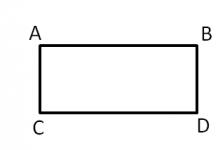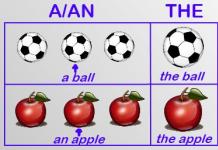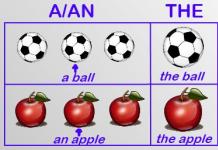Currently, many financial organizations cannot pay for purchased goods and services on time for one reason or another. To pay off such financial obligations, a special debt payment letter may be useful.
Financial difficulties hit small businesses especially hard. As a result, suppliers may be faced with a receivable type of debt. To solve such problems, which may ultimately lead the organization to initiate bankruptcy proceedings, it is necessary to negotiate with counterparties.
Dear readers! The article talks about typical ways to resolve legal issues, but each case is individual. If you want to know how solve exactly your problem- contact a consultant:
APPLICATIONS AND CALLS ARE ACCEPTED 24/7 and 7 days a week.
It's fast and FOR FREE!
A debt settlement letter can help resolve financial issues quickly and effectively for all parties to the agreement. To draw up such a document, you need to familiarize yourself with the basic rules, types of requirements, as well as possible benefits.
How to prepare
To repay debt obligations, organizations must contact counterparties with a request for a deferred payment. This step can help direct the freed-up funds to cover critical expenses, such as employee salaries. It is worth remembering that delaying timely payments to employees may result in additional interest for late payments.
Debt can cause additional expenses and problems within the work team. To resolve them in a timely manner, it is necessary to write a special letter and send it to regular suppliers with whom the organization has been cooperating for quite a long time. Such partners will most likely agree to defer payment.
To write a letter correctly, you must do the following:
- indicate a specific date until which the organization wants to defer payment on its debt obligations;
- justify the problematic situation that has arisen, explaining the possibility of further payment of the debt and continuation of uninterrupted cooperation with the counterparty;
- explain that the organization is ready to pay the amount in full, but at a later time;
- state that the company does not want to pay penalties resulting from late payment.
It is worth noting that contracts and invoices must be attached to the document, according to which the counterparties receive a request to postpone the payment date. This requirement is not mandatory and is not regulated in any way by current legislation. However, this can help simplify the work of the counterparty’s employees and himself in dealing with the received appeal.
As for the counterparties themselves, the debtor organization must receive official notification from them. Which indicates agreement or disagreement with the postponement of payments. If the request is approved, the organization can easily navigate to the new target date. If the company receives a negative response, it is necessary to pay the full amount, as well as fines and penalties, within the period specified in the original agreement.
The creditor may refuse these promises to postpone the payment of obligations. That is why you must always keep this letter with you. The document is a legal justification for the transfer. The safest option is to sign a bilateral agreement with the counterparty. However, since the preparation of such a document takes quite a lot of time, usually a simple receipt is issued.
It is also important to make sure that an authorized employee is acting on behalf of the counterparty. This is due to the fact that not all persons have the right to conclude and amend contracts. The most reliable option may be when the document is signed by the director of the organization acting as a counterparty in this matter.
The agreement may immediately specify interest and the level of penalties. The presence of such a condition in the contract cannot contradict the law. The supplier can also put forward individual conditions in cases where it has obligations to its own counterparties.
If the organization is satisfied with the conditions put forward regarding the time frame for payment, then its representative must provide the counterparty with written notice
Types of requirements
Notice of payment of overdue obligations can be of many different types.
It is worth considering the most common:
| Debt repayment agreement | Such a notice contains up-to-date information about the amount of existing financial obligations, as well as the timing of payment. The document must also necessarily include instructions that will need to be followed after another delay in payment of funds. These instructions may relate to the assessment of penalties and interest. |
| Debt payment letter sent to customers or suppliers | This document can be sent to counterparties only if debt obligations have arisen as a result of non-payment for goods or services. When drawing up such a letter, Article 723 of the current Civil Code of the Russian Federation may be taken. |
| Notification of violation of established quality parameters of products or services | This document is one of the most popular. The paper contains data indicating a certain discrepancy in the quality characteristics of the goods or services provided. |
| Notices sent to financial institutions and insurance agencies | A document can be drawn up only in cases where it is necessary to challenge one of the provisions of a concluded bilateral agreement. It is worth noting that such a notice can be drawn up in free form. |
Advantages of a debt payment letter
A letter demanding payment of debt obligations must be sent to the debtor when certain financial obligations arise. This document may become one of the factors for possible successful proceedings in higher courts. The letter can confirm the fact that the borrower was promptly notified of his obligations to the counterparty.
It is worth noting that this document is sent to the payer’s place of residence. If the debt relates to legal entities, then the legal address of the debtor is also taken into account. Sending such a notice is beneficial to all parties to the contract.
This may be due to the following:
- the document allows you to quickly coordinate efforts to resolve financial difficulties without going to court;
- a person who has financial obligations to counterparties will know exactly the amount of his debt and the established payment terms;
- the pre-trial procedure is beneficial to the heads of all organizations to protect their reputation and to continue cooperation with existing partners.
It is worth noting that in complex proceedings it is worth seeking help from highly qualified lawyers. Specialists will be able to correctly arrange all the elements of the letter. In particular, this applies to the list of requirements of the counterparty that the payer violated.

If the document is drawn up incorrectly, a situation may arise in which the notification will not have legal force
Examples
Below are the three most common examples of formatting a letter for payment of debt obligations:
| Example No. 1 | Dear Anatoly Sergeevich, I am forced to remind you once again that by December 7, 2016, you are required to repay the existing debt under all construction contracts in full. If you are unable to do this by the specified date, please contact the director of your company and arrange a meeting with us. We hope that the financial issues that have arisen will be resolved soon. Sincerely, Boris Romanov. |
| Example No. 2 | Dear Anton Pavlovich, We kindly ask you to repay your existing debt obligations to our company by 05/01/17. As of the current moment, the amount of your debt to INOTECH LLC is 280,000 rubles. If the debt is not repaid on time and in full, we will be forced to go to court. Additional instructions in case of refusal of payments. They will be sent to you later. Sincerely, Mikhail Morozov. |
| Example No. 3 | Dear Matvey Andreevich, In accordance with agreement No. 36 dated September 6, 2016, the contractor company Mine Read LLC performed work for the customer Delta-Rus LLC to supply gas equipment in the amount of 600,000 rubles. Clause 4 of this agreement establishes that the customer, after signing the corresponding act of acceptance of the goods, which occurred on September 6, 2016, must pay for the service provided in full. However, the customer violated this condition of the agreement and the work has not yet been paid for. |
Letter No. 1
I remind you once again that by 04/01/2014 you are obliged to repay the debt in full under all existing agreements. If you are unable to do this, please arrange for us to meet with the director of your company before the specified date.
We hope for your integrity in resolving financial issues.
Sincerely,
Petr Ivanov.
Letter No. 2
Dear Viktor Alexandrovich,
We kindly ask you to repay your current debt by April 1, 2014.
As of today, your total debt to Bez Borders LLC is 100,000 rubles.
If the debt is not repaid within the specified time frame, we will be forced to go to court.
Sincerely,
Petr Ivanov.
Letter No. 3
Dear Viktor Alexandrovich,
According to agreement No. 45 dated February 1, 2014, the contractor company Bez Borders LLC performed work for the customer company Delo.ru LLC on the delivery of construction equipment in the amount of 500,000 rubles 89 kopecks.
Clause No. 3 states (clause indicating full payment) that the Customer, after signing the certificate of completion of work, which occurred on March 1, 2014, must make a full payment for the services. But the Customer violated this condition of the Contract, and to date the work has not been paid for.
As of April 7, 2014, the debt of Delo.ru LLC to Bez Borders LLC is 500,000 rubles.
Otherwise, we will apply to the Arbitration Court to forcibly collect the debt with the accrual of the appropriate penalty.
Sincerely,
The functions of accounting include not only control of the parent financial enterprise, but of counterparties, whose legal and property status undergoes changes over time.
A change in the accounts receivable indicator makes it necessary to obtain information about the legal status of the other party to the transaction, for which obligations are considered unfulfilled.
Dear readers! The article talks about typical ways to resolve legal issues, but each case is individual. If you want to know how solve exactly your problem- contact a consultant:
APPLICATIONS AND CALLS ARE ACCEPTED 24/7 and 7 days a week.
It's fast and FOR FREE!
On the basis of what documents the debt is written off, the features of tax accounting for bad payments under the simplified tax system are described in this article.
What means
Accounts receivable arise when goods are transferred to the buyer or a service is provided to the customer, but payment in connection with the performance has not yet been received by the performing company or supplier.
Depending on whether the payment is due or not, a distinction is made between normal and overdue debt.
Debts are written off when grounds for closing them arise. It could be:
- when the statute of limitations has passed;
- upon termination of obligations due to the impossibility of their fulfillment for objective reasons;
- when the debtor’s activities are suspended on the basis of an order from an authority;
- liquidation of an organization - a legal entity;
- in connection with the death of an individual entrepreneur - an individual.
Writing off debt is a prerequisite for maintaining accounting and tax records. At the same time, the procedure becomes necessary during the reporting period in which the circumstances for closing financial obligations arose (Tax Code of the Russian Federation).
That is, the expense is recognized on the last day of the reporting period in which the loss arose. The debt is reflected on the balance sheet of the creditor enterprise, in whose account the lost benefit is recorded.
Tax legislation does not provide for any other procedure for establishing the time for write-off.
Liquidation of a business does not result in cancellation or forgiveness of debt. When conducting an audit, the controlling body must track the movement of funds and the occurrence of documentation; therefore, after establishing the fact of liquidation of the debtor, the lost funds are reflected within 5 years on the company’s off-balance sheet account.
Also, such a mechanism was introduced to establish a possible return of funds. It does not matter whether the enterprise ceased operation on the initiative of management or in connection with its declaration of insolvency in accordance with the procedure established by law. It is important to make a record of liquidation in the Unified State Register of Legal Entities and Entrepreneurs.
For write-off, it is important that the liquidation ends with the complete cessation of the enterprise's activities without the right to transfer rights to another company, in particular, as in the case of reorganization or other types of succession of obligations.
The amount of receivables is taken into account as part of goods, works and services with VAT, since it was included in the price when the obligations under the contract were fulfilled by the creditor - supplier or performer.
It is important to comply with this requirement when preparing tax reporting in order to correctly calculate the base for calculating mandatory contributions.
Order
First, accounts receivable are written off as doubtful, and then as uncollectible. Next, an inventory of debts is carried out, the result of the measures taken is a corresponding act, which is entered into the accounting book.
The document is accompanied by a certificate drawn up by an accountant stating that it is not possible to collect the debt, and the deadline for fulfilling the debtor’s obligations has expired.
The final stage is the signing of a certificate of write-off by the head of the creditor company.
After taking these measures, the debt is resolved, the question of how it will be taken into account when calculating income tax.
It is possible to record in the account of non-operating expenses or off-balance sheet account 007 of the reserve fund for doubtful debts.
It is necessary to pay attention to the fact that according to the accounting rules, the amounts that participated in its formation are written off from the reserve fund. According to tax accounting requirements, this does not matter.
When writing off, you should be guided by the Tax Code of the Russian Federation. In accounting, the procedure for making entries is regulated by July 29, 1998, as well as by the Accounting Law.
The procedure for fulfillment of obligations by counterparties is regulated by regulations. Transactions are reflected on the balance sheet on the basis.
The grounds for writing off debt in connection with the liquidation of the debtor are listed in the Civil Code of the Russian Federation.
Inventory of debt is carried out on the basis of Article 11 of the Accounting Law on a monthly basis before drawing up the annual report.
If an entry about a legal entity or individual entrepreneur is excluded from the Unified State Register at the initiative of the tax service, this happens due to regular failure to submit declarations, lack of actual activity and debts on tax payments. Such situations do not apply to write-offs.
In this case, there can be two ways out: to declare a bankruptcy procedure after 3 months after the deadline for payment, or to challenge the exclusion from the register; the procedure is carried out no later than within 1 year after the Federal Tax Service of the Russian Federation has introduced the measure.
Documentation
The main documents confirming the right to write off debt, on the basis of the Accounting Regulations, are:
- inventory act;
- justification of the accountant - a written certificate;
- a write-off order signed by the manager.
Also, the creditor company will need evidence of the impossibility of obtaining debt, this may be a certificate from the Unified State Register of Legal Entities on the liquidation of the enterprise.
The economic justification for closing the debt can be:
- a claim brought against a debtor in court;
- order of the bailiffs to return the writ of execution due to the impossibility of execution;
- a court decision that has entered into force to terminate the activities of an enterprise, for example, in the case of bankruptcy.
As a document - the basis for writing off a debt, a legally binding court decision can be considered to recognize a transaction made with the participation of counterparties as invalid, that is, made in contradiction with the current norms of the law, under threat, by persons not authorized to take actions from company name and more.
Thus, when writing off a debt, the accountant must base the entry on the following documents:
- confirming the occurrence of debt - supply agreements, provision of services, etc.;
- proving attempts to collect the debt;
- about the insolvency of the counterparty, its liquidation;
- order from the manager to carry out the specified measure.
Order to write off receivables in connection with the liquidation of the debtor
The document is drawn up in any form. Important points are the indication in it of the contract on the basis of which the write-off is made, the date of occurrence of obligations to repay the debt, data on the liquidation of the debtor with reference to the court decision and an entry from the Unified State Register of Legal Entities.
Features of the simplified tax system
When calculating the tax base under the simplified tax system, both sales and non-sale income are taken into account. This means that expenses do not matter for accounting and tax purposes. This is due to the fact that accounts receivable do not provide benefits to the enterprise.
For enterprises that operate under the general taxation system, there is a need to pay VAT charged when providing services, selling goods or performing work.
BUKH.1S experts spoke about the procedure for writing off bad debts using reserves, as well as debts not covered by reserves.
Accounts receivable is the sum of all debts owed to the organization by other legal entities and individuals. Accordingly, the organization's debtors are its debtors. Accounts receivable can be considered reliable (for example, if it is secured by a pledge, surety, bank guarantee), doubtful and hopeless (uncollectible).
When counterparties' debts are considered bad
Bad receivables are an amount that an organization cannot collect from its counterparties due to certain reasons. For profit tax purposes, bad debts (debts that cannot be collected) are considered debts if at least one of the conditions listed in paragraph 2 of Article 266 of the Tax Code of the Russian Federation is met:
1. The established limitation period has expired. In general, this period is three years (clause 1 of Article 196 of the Civil Code of the Russian Federation). The limitation period begins to run from the moment when a person learned or should have learned about a violation of his right (Article 200 of the Civil Code of the Russian Federation). The limitation period is interrupted if the debtor commits actions indicating recognition of the debt (Article 203 of the Civil Code of the Russian Federation). After the break, the limitation period begins to run again, but it cannot exceed ten years (clause 2 of Article 196 of the Civil Code of the Russian Federation).
Thus, accounts receivable may not be recognized as uncollectible for a long time.
2. The debtor’s obligation is terminated due to the impossibility of its fulfillment on the basis of an act of a state body or the liquidation of an organization.
3. There is a resolution of the bailiff on the completion of enforcement proceedings, confirming the impossibility of collecting debts. In this case, the writ of execution must be returned to the claimant on the following grounds:
- it is impossible to establish the location of the debtor, his property or to obtain information about the availability of funds and other valuables belonging to him;
- the debtor does not have property that can be foreclosed on.
If there are several grounds for recognizing a receivable as bad (for example, the expiration of the statute of limitations and the liquidation of the debtor organization), then the debt is considered bad in the tax (reporting) period in which the first basis for recognizing the debt as bad took place (letter Ministry of Finance of Russia dated June 22, 2011 No. 03-03-06/1/373).
In the Regulations on accounting and reporting in the Russian Federation, approved. By order of the Ministry of Finance of Russia dated July 29, 1998 No. 34n (hereinafter referred to as the Regulations), only receivables with an expired statute of limitations are explicitly named as debts that are unrealistic for collection (clause 77 of the Regulations).
However, in practice, the criteria for recognizing debts as bad, which are named in paragraph 2 of Article 266 of the Tax Code of the Russian Federation, are also applied for accounting purposes.

The procedure for writing off bad debts...
...in accounting
Accounts receivable recognized as uncollectible (uncollectible) are written off for each obligation on the basis of inventory, written justification and order (instruction) of the head of the organization (clause 77 of the Regulations). If in the period preceding the reporting period, the amounts of such debts were not reserved in the manner prescribed by clause 70 of the Regulations, then they are attributed to the financial results of a commercial organization or to an increase in expenses of a non-profit organization (clause 77 of the Regulations, letter of the Ministry of Finance of Russia dated January 14, 2015 No. 07-01-06/188). note that according to the Regulations, since 2011, the formation of a reserve for doubtful debts is the responsibility of the organization.
It should be borne in mind that writing off a debt at a loss due to the insolvency of the debtor does not constitute cancellation of the debt. This debt must be reflected on the balance sheet for five years from the date of write-off in order to monitor the possibility of its collection in the event of a change in the debtor’s property status (paragraph 2 of clause 77 of the Regulations).
The amount of debt written off is recorded in off-balance sheet account 007 “Debt of insolvent debtors written off at a loss.” If the debtor makes payment on a previously written off debt, it should be reflected as part of the organization’s other income (clauses 4, 7 of PBU 9/99 “Organization’s Income”, approved by order of the Ministry of Finance of Russia dated May 6, 1999 No. 32n).
We remind you that in the balance sheet the balances of account 63 “Provisions for doubtful debts” are not shown, and the amount of receivables for which the reserve is formed is reflected minus the amount of the reserve. At the same time, retained earnings are reduced by the same amount (Chart of accounts for accounting of financial and economic activities of organizations and Instructions for its application, approved by order of the Ministry of Finance of Russia dated October 31, 2000 No. 94n, clause 35 of PBU 4/99 “Accounting statements of an organization”, approved by order of the Ministry of Finance of Russia dated July 6, 1999 No. 43n). In the statement of financial results, deductions to reserves for doubtful debts are reflected as part of other expenses (clause 11 of PBU 10/99 “Expenses of the organization,” approved by order of the Ministry of Finance of Russia dated May 6, 1999 No. 33n). Thus, writing off debts through the reserve does not affect the financial statements.
... in tax accounting
Amounts of receivables for which the statute of limitations has expired or the collection of which is impossible are considered uncollectible and are written off in full, including VAT (letters of the Ministry of Finance of Russia dated July 24, 2013 No. 03-03-06/1/29315, dated June 11, 2013 No. 03 -03-06/1/21726).
A taxpayer may create reserves for doubtful debts in the manner established by Article 266 of the Tax Code of the Russian Federation.
Please note that only the receivables of the counterparty associated with the sale of goods, performance of work, and provision of services can be recognized as doubtful debt for the purposes of forming reserves in tax accounting. Amounts of deductions to reserves for doubtful debts are included in non-operating expenses on the last day of the reporting (tax) period and, accordingly, reduce the tax base for this period (clause 7, clause 1, article 265 of the Tax Code of the Russian Federation, clause 3, article 266 of the Tax Code of the Russian Federation ).
If the taxpayer has decided to create a reserve for doubtful debts, then the write-off of bad debts is carried out at the expense of the amount of the created reserve (clause 4 of Article 266 of the Tax Code of the Russian Federation).
If such a reserve was not created, or the amounts of bad debts are not covered by the reserve, then they are included in non-operating expenses (clause 2, clause 2, article 265, clause 5, article 266 of the Tax Code of the Russian Federation).
At the same time, debts that are not related to the sale of goods (works, services) can also be recognized as bad debts, for example:
- the amount of the advance payment transferred to the supplier against the upcoming delivery of goods (letter of the Ministry of Finance of Russia dated September 4, 2015 No. 03-03-06/2/51088);
- the amount of debt under the loan agreement (letters of the Ministry of Finance of Russia dated July 16, 2015 No. 03-03-06/3/40956, dated April 24, 2015 No. 03-03-06/1/23763).
How should a taxpayer write off debts of this nature? The Resolution of the Presidium of the Supreme Arbitration Court of the Russian Federation dated June 17, 2014 No. 4580/14 sets out the position according to which a bad debt that arose not in connection with the sale of goods (works, services) cannot participate in the formation of a reserve for doubtful debts (clause 1 of Article 266 Tax Code of the Russian Federation), therefore cannot be written off from the reserve. Such debt can be taken into account as part of non-operating expenses when calculating the income tax base in accordance with subparagraph 2 of paragraph 2 of Article 265 of the Tax Code of the Russian Federation.
The date of recognition of non-operating expenses in tax accounting is established by paragraph 7 of Article 272 of the Tax Code of the Russian Federation. Bad debts for which the statute of limitations has expired are taken into account on the last day of the reporting period in which the statute of limitations expires (letter of the Ministry of Finance of Russia dated 02/06/2015 No. 03-03-06/1/4995, dated 01/28/2013 No. 03-03-06/1/38).
If the amounts of reserves accrued in accounting and tax accounting differ, then differences arise in the assessment of income and expenses recorded in account 91 “Other income and expenses” and, as a consequence, profits and losses recorded in account 99 “Profits and losses” . In accordance with the Accounting Regulations “Accounting for income tax calculations”, approved. by order of the Ministry of Finance of Russia dated November 19, 2002 No. 114n (hereinafter referred to as PBU 18/02), these differences are permanent. Permanent differences recorded in account 99 are taken into account when calculating income tax for the corresponding period: a permanent tax liability (PNO) or a permanent tax asset (PNA) is recognized.
In the income tax return (approved by order of the Federal Tax Service of Russia dated October 19, 2016 No. ММВ-7-3/572@), losses from writing off bad debts are reflected in Appendix No. 2 to Sheet 02:
- on line 302 “amounts of bad debts, and if the taxpayer has decided to create a reserve for doubtful debts, amounts of bad debts not covered by the reserve funds”;
- in the total amount for line 300 “Losses equated to non-operating expenses - total.”

Write-off of bad receivables in 1C:Accounting 8
Let's look at how “1C: Accounting 8” (rev. 3.0) reflects transactions to write off bad receivables.
Example 1
Inventory of calculations
To check the amounts of accounts receivable, as well as compare the reserves for doubtful debts accrued in accounting and tax accounting, we will use the report Subconto analysis(chapter Reports).
In the command panel of this report, you need to set the period for generating the report, and from the presented list of subconto types, select the value Treaties. In the settings panel (button Show settings) on the tab Indicators set the flags BU (accounting data) And NU (tax accounting data).
On the bookmark Selection You can set the selection for a specific agreement with the debtor.
The generated report allows you to analyze accounting and tax accounting data for the selected agreement at the time of expiration of the limitation period with details of the accounts (Fig. 1).

Rice. 1. Analysis of the subconto under the agreement with the debtor
Before performing an operation to write off a bad debt, it is necessary to draw up an inventory of settlements. The program uses a document for this purpose Inventory act of calculations, accessed via the hyperlink of the same name from the sections Sales And Purchases.
Fill based on accounting data Accounts receivable(Fig. 2) is filled in with the balances of accounts receivable as of the inventory date as follows:
Table 1
|
Field |
Data |
|
"Counterparty" |
Names of debtors |
|
"Settlement account" |
Accounts for which accounts receivable are recorded |
|
Accounts receivable amount |
|
|
"Confirmed" |
The amount for which there is documentary evidence. By default, all debt is considered confirmed |
|
"Not confirmed" |
An amount for which there is no documentary evidence. This field must be filled in manually |
|
“Incl. the statute of limitations has expired" |
The amount of overdue receivables for which the statute of limitations has expired. This field must be filled in manually |

Rice. 2. Inventory report of settlements
Tabular part on the tab Accounts payable filled in the same way as filling out a bookmark Accounts receivable. Under the terms of Example 1, there are no accounts payable.
On the bookmark Settlement accounts displays a list of accounts for settlements with counterparties for which an inventory of settlements is performed.
By default, the following accounts are included in this list:
- 60 “Settlements with suppliers and contractors”;
- 62 “Settlements with buyers and customers”;
- 66 “Settlements for short-term loans and borrowings”;
- 67 “Settlements for long-term loans and borrowings”;
- 76 “Settlements with various debtors and creditors”, including accounts 76.07 “Settlements for rent”, 76.27 “Settlements for rent (in foreign currency)” and 76.37 “Settlements for rent (in cu)”;
- 58 “Financial investments”.
The user can manage the list of accounts by adding other accounts or disabling accounts suggested by the program.
On the bookmark Carrying out an inventory in the appropriate fields you should indicate the timing of the inventory, details of the basis document, as well as the reason for the inventory of calculations.
On the bookmark Inventory commission you need to fill out the list of committee members by selecting them from the directory Individuals.
The chairman of the commission is indicated using a flag in the field Chairman.
Document Inventory act of calculations does not generate transactions, but allows you to generate the following printed forms of documents (button Seal):
- Order to conduct an inventory (INV-22);
- Inventory report of settlements (INV-17).
Write-off of buyer's debt
Under the conditions of Example 1, the amount of accrued reserves in accounting and tax accounting differs.
In accounting, there is a bad debt in the amount of RUB 150,000.00. We will write it off completely from the reserve. In tax accounting, only 100,000.00 rubles will be written off from the reserve, and the remaining debt in the amount of 50,000.00 rubles, not covered by the reserve, will be included in non-operating expenses.
To write off a bad debt using reserves, you can use a standard program document Debt adjustment(Fig. 3). This document is available from the section Sales, and from the section Purchases.
Document header Debt adjustment must be filled in by selecting the following values from the proposed lists:
table 2
The document is filled in automatically using the button Fill ->Fill in balances for mutual settlements based on accounting data. Tabular part on the tab Buyer's debt (accounts receivable) is filled in with the balances of mutual settlements as of the adjustment date as follows:
Table 3
|
Field |
Data |
|
"Settlement amount" |
Total amount of debt (RUB 150,000.00) |
|
The amount of debt write-off in accounting. By default, this amount corresponds to the total amount owed |
|
|
"Amount NU" |
The amount of debt write-off in tax accounting. By default, this amount also corresponds to the total amount owed. Since this document will write off the debt from the reserve, it is necessary to manually correct the amount in the “Amount NU” field (RUB 100,000.00) |
|
"Account" |
Account on which the debt arose (62.01) |
On the bookmark Write-off account you need to indicate the account where the doubtful receivables will be allocated (63 “Provisions for doubtful debts”), as well as the details of the agreement with the counterparty and the settlement document on which the doubtful receivables were generated (see Fig. 3).

Rice. 3. Write-off of bad receivables using reserves
After posting the document, an accounting entry will be generated:
Debit 63 Credit 62.01 - for the amount of debt written off at the expense of the reserve created in accounting (RUB 150,000.00).
For tax accounting purposes for income tax, amounts are entered into special resources of the accounting register:
Amount NU Dt 63 and Amount NU Kt 62.01 - for the amount of debt written off at the expense of the reserve created in tax accounting (RUB 100,000.00). Amount PR Dt 63 and Amount PR Kt 62.01 - for a constant difference, the value of which is RUB 50,000.00.
For income tax purposes, the remaining portion of the bad debt is written off as non-operating expenses using the document Operation(chapter Operations-> Accounting-> Manual entries). In the document form, to create a new transaction, click the button Add and enter the amounts into special resources of the accounting register (in this field Sum must remain empty):
Amount NU Dt 91.02 and Amount NU Kt 62.01 - for the amount of written off debt not covered by the reserve (RUB 50,000.00). Amount PR Dt 91.02 and Amount PR Kt 62.01 - for a negative constant difference (-50,000.00 rub.). When performing the routine operation Calculation of income tax for March, which is included in the Closing of the month processing, this permanent difference leads to the recognition of a permanent tax asset in the amount of RUB 10,000.00.
Please note that in order to correctly fill out the income tax return, it is important to correctly select the item of other income and expenses - Write-off of receivables (payables). Then, when automatically filling out the income tax return for the first quarter of 2017, losses from writing off bad debts in the amount of RUB 50,000.00. will be reflected on line 302 of Appendix No. 2 to Sheet 02, as well as in the total amount on line 300 of Appendix No. 2 to Sheet 02.
To make sure that bad debts are written off in accounting and tax accounting, you can generate a balance sheet for account 62 for March 2017, having previously made the appropriate settings on the Indicators tab. The balance sheet generated under account 63 for March 2017 will show the absence of reserves for doubtful debts.
To account for written-off debt in order to monitor the possibility of its collection (in accordance with paragraph 2 of clause 77 of the Regulations), we will also use the document Operation.
In the document form, to create a new transaction, you need to click the button Add and enter an entry for the amount of RUB 150,000.00. on the debit of off-balance sheet account 007 indicating the corresponding analytics (sub-account Counterparties And Treaties).
Repayment of written-off debt
Let's add the condition of Example 1 and see how the 1C: Accounting 8 program, edition 3.0, reflects the repayment by the buyer of a debt that was legally written off earlier as bad.
Example 2
To register the repayment of debt by the buyer, you need to create a document Receipt to the current account with type of operation Payment from the buyer. It is convenient to create a document based on a document Sales (deed, invoice), then the basic details will be filled in automatically. Since the debt has already been written off in the accounting system, the funds received from the buyer are automatically determined as an advance payment. After posting the document, an accounting entry will be generated:
Debit 51 Credit 62.02 - for the amount of funds received from the buyer (RUB 150,000.00).
For tax accounting purposes for income tax, the amount is recorded in the resource Amount NU Kt 62.02.
The amount of repaid debt must be included in the organization’s other income, and also written off from off-balance sheet account 007. These transactions can be reflected in one document Operation(see Fig. 4).

Rice. 4. Including repaid debt in income
Establishes that utility payments must be made no later than the 10th.
Payment has already been made for the past month; an advance system is not provided for these types of services.
The debt begins to form on the 11th, if payment has not been made in full or is missing altogether.
At the HOA meeting, the payment date can be changed at the initiative of management or by a majority of residents.
Legal justification
Dear readers! The article talks about typical ways to resolve legal issues, but each case is individual. If you want to know how solve exactly your problem- contact a consultant:
APPLICATIONS AND CALLS ARE ACCEPTED 24/7 and 7 days a week.
It's fast and FOR FREE!
The procedure for accrual, calculation and payment of utility services is regulated by several legislative acts of the Housing Code.
To find information, you will need to refer to article No. 153, 154,.
Payment in installments
To do this, an agreement is concluded with the management company, which specifies the conditions for restructuring the rent debt.
But there are several nuances to consider:
The management company may terminate the contract unilaterally if the debtor does not make payments on time or is late in paying the current debt.
Consequences of debt
Basic:
- Accrual of penalties.
- Disconnection of a resource, termination of a contract for the provision of utility services.
- Seizure of property.
- Confiscation of property, including apartments.
During the first three months of nonpayment, utility services do not take action.
From the fourth month, letters begin to arrive at the debtor’s postal and/or email address demanding payment of the debt.
Peaceful solutions to the problem are proposed for 3-5 months, during which notices are sent out, utility workers come for a personal conversation with the debtor.
He must be warned that if there is no payment, the provision of the service will be suspended in the near future.
At the next stage, the debtor’s water, electricity or gas is turned off.
The suspension of the supply of resources is temporary, pending receipt of payments.
The next stage is the termination of the contract for the provision of utilities and the transfer of the debt collection case to the court.
The defendant has about 3 weeks to repay the debt.
If there is no money in the specified amount, you should contact the management company and agree on debt restructuring.
The debtor's inaction leads to the fact that the case is considered by the judicial authorities.
Eviction
If the apartment is in social rent, the owner may demand the eviction of the tenants if there is no payment for utilities within 3-4 months.
When evicted from municipal housing, tenants are given another apartment, but with a smaller area, worse conditions, but also with a lower rent.
You can prevent the replacement of housing only by proving that the debt arose for a good reason (for example, etc.).
Disabling services

















